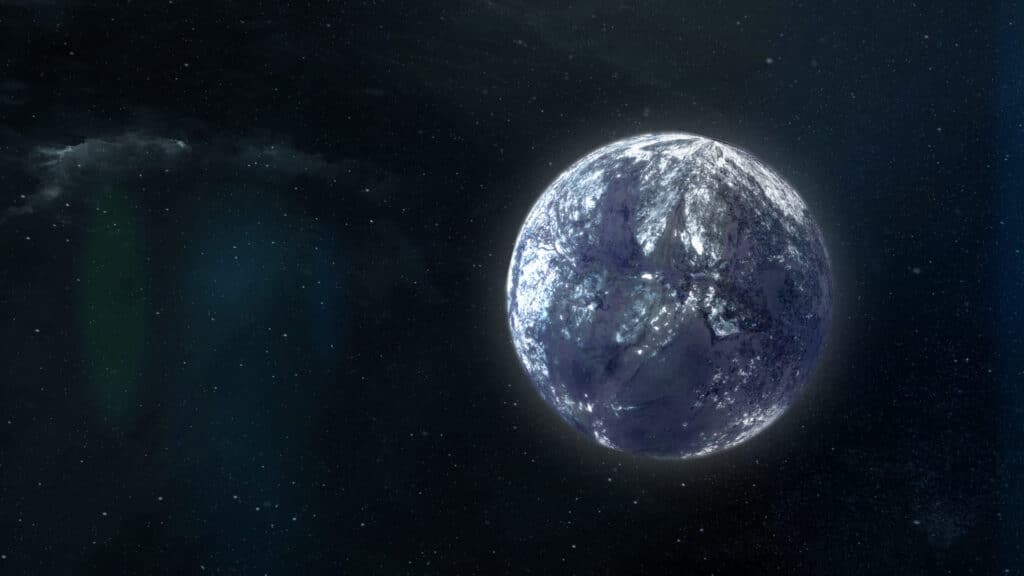NASA Telescope Could Find 400 Earth-Mass Worlds, Research Suggests
NASA, in collaboration with Osaka University in Japan, has conducted groundbreaking research suggesting that there are far more rogue planets, which drift through space without a star to orbit, than planets that are tethered to stars.
The study’s findings indicate that NASA’s upcoming Nancy Grace Roman Space Telescope, set to launch by May 2027, has the potential to discover a staggering 400 Earth-mass rogue planets. Excitingly, this study has already identified one candidate.
“We estimate that our galaxy is home to 20 times more rogue planets than stars – trillions of worlds wandering alone. This is the first measurement of the number of rogue planets in the galaxy that is sensitive to planets less massive than Earth,” says David Bennett, a senior research scientist at NASA’s Goddard Space Flight Center, in a statement.
The findings stem from a nine-year survey called MOA (Microlensing Observations in Astrophysics) conducted at New Zealand’s Mount John University Observatory. Microlensing events occur when an object, such as a star or planet, aligns almost perfectly with an unrelated background star as seen from Earth. The mass of the object warps the fabric of space-time, causing the light from the distant star to bend around it. This natural lensing effect creates a brief increase in the brightness of the background star’s light, providing astronomers with insights about the intervening object that cannot be obtained in any other way.
“Microlensing is the only way we can find objects like low-mass free-floating planets and even primordial black holes,” explains Takahiro Sumi, a professor at Osaka University and lead author of the paper. It’s very exciting to use gravity to discover objects we could never hope to see directly.”
The team has already identified a rogue planet roughly the size of Earth, marking the second discovery of its kind. The findings will be published in a future issue of The Astronomical Journal. Another paper, presenting a demographic analysis that concludes rogue planets are six times more abundant than star-bound worlds in our galaxy, will be published in the same journal.
Contrary to the majority of newfound planets, which are either massive or extremely close to their host stars, the team’s results indicate that rogue planets tend to be smaller. “We found that Earth-size rogues are more common than more massive ones. The difference in star-bound and free-floating planets’ average masses holds a key to understanding planetary formation mechanisms,” says Sumi.
The chaotic process of planet formation often involves gravitational interactions among celestial bodies as they settle into their orbits. Planets with less mass are less strongly tethered to their stars, making them more susceptible to being flung into space by these interactions. Thus, they embark on a solitary existence, hidden amidst the shadows between stars.
While the concept of a habitable starless planet, similar to the one featured in an episode of the original Star Trek series, may seem plausible, the team emphasizes that the newly detected “rogue Earth” likely does not share many other characteristics with our own planet, apart from its mass.
The upcoming Nancy Grace Roman Space Telescope is expected to significantly expand our knowledge of rogue planets. Naoki Koshimoto, the lead author of the paper announcing the detection of a candidate terrestrial-mass rogue world, highlights the advantages of the telescope’s wider view and sharper vision from space. “The combination of Roman’s wide view and sharp vision will allow us to study the objects it finds in more detail than we can do using only ground-based telescopes, which is a thrilling prospect,” she says.
Previous estimates suggested that Roman would detect 50 terrestrial-mass rogue planets based on planets found orbiting stars. However, the recent findings suggest that the telescope could potentially find around 400 such planets. To enhance predictions, scientists will combine Roman’s data with observations from ground-based telescopes like Japan’s PRIME (Prime-focus Infrared Microlensing Experiment) telescope.
While each microlensing event is a unique occurrence, astronomers will have the opportunity to conduct simultaneous observations using both Roman and PRIME. This will enable scientists to measure the masses of rogue planets with unprecedented accuracy, providing deeper insights into the worlds scattered throughout our galaxy.













